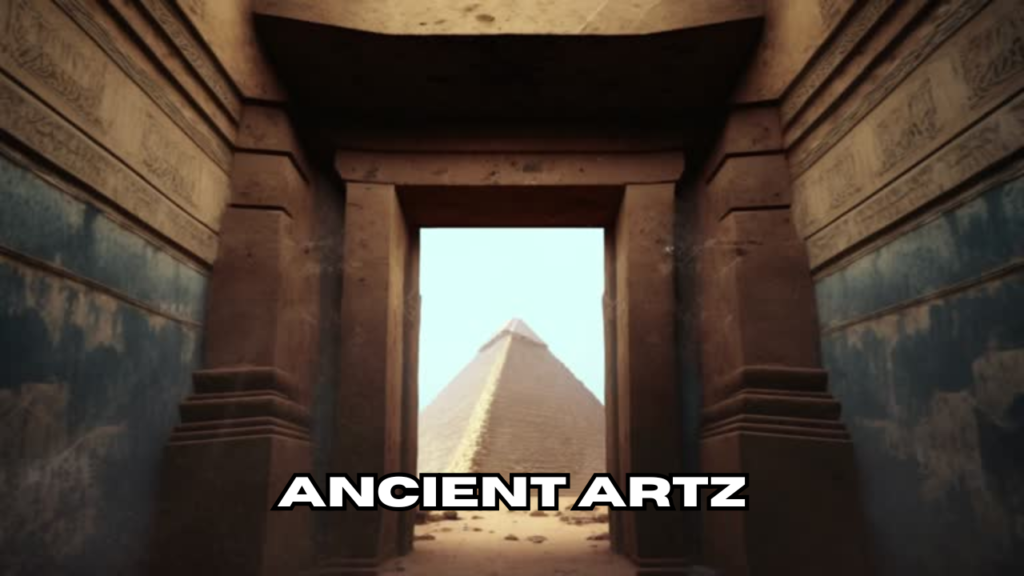The term ancient artz represents a treasure trove of creativity that stretches back thousands of years, offering a glimpse into the minds, cultures, and ambitions of the earliest civilizations. These artistic masterpieces, created with limited tools but infinite imagination, hold a mirror to the past, reflecting the values, spiritual beliefs, and technological advancements of their creators. Exploring ancient art is like unraveling a story told through stone, clay, metal, and paint—each piece revealing a fragment of human history.
What Defines Ancient Artz?
Ancient artz, at its core, encompasses various artistic expressions, including sculptures, paintings, pottery, jewelry, and architectural marvels. These creations were not just decorative but functional, spiritual, and societal tools. Whether it was a towering statue meant to honor a deity, a fresco depicting daily life, or intricately crafted jewelry symbolizing status, every piece carried meaning and purpose.
Sculptures and Statues: The Guardians of History
Among the most enduring symbols of ancient artz are sculptures and statues. From the colossal pyramids of Egypt adorned with intricate carvings to the statues of Greek gods like Zeus and Athena, these works showcase a blend of technical skill and cultural significance. The ancient Egyptians, for example, meticulously carved statues of pharaohs and deities, imbuing them with symbolic power and reverence. Similarly, the Greeks excelled in creating lifelike sculptures celebrating the human form, emphasizing balance, proportion, and beauty.
Murals and Frescoes: Stories on Walls
Vivid murals and frescoes are another hallmark of ancient artz. These colorful paintings adorned the interiors of temples, palaces, and tombs, serving as visual narratives of a civilization’s beliefs and way of life. The frescoes of Pompeii, preserved under layers of volcanic ash, provide an unparalleled look at Roman daily life. Meanwhile, the Minoans of Crete depicted vibrant scenes of nature and mythology in their palace frescoes, showcasing a connection to their environment and spiritual world.
Pottery and Ceramics: Function Meets Art
Pottery and ceramics in ancient artz were not merely utilitarian; they were canvases for artistic expression. Ancient Greek pottery, for example, featured black-figure and red-figure techniques, often illustrating epic tales and heroic deeds. In contrast, Chinese ceramics, such as the delicate porcelain of the Han and Tang dynasties, highlighted technical mastery and aesthetic refinement. Each piece was a harmonious blend of form and function, demonstrating the versatility of ancient artisans.

Jewelry and Metalwork: Beauty in Precision
The exquisite jewelry and metalwork of ancient civilizations reflect their craftsmanship and resourcefulness. The Egyptians excelled in goldsmithing, creating intricate pieces adorned with gemstones and symbolic motifs like the ankh and scarab. Celtic metalwork, known for its intricate knot patterns, showcases a deep appreciation for symmetry and detail. These artifacts were not only symbols of wealth but also carried religious and cultural significance, marking essential milestones or serving as talismans.
Architectural Marvels: Monuments to Ambition
Architectural achievements are perhaps the most awe-inspiring aspect of ancient artz. Structures like the Great Pyramids of Giza, the Parthenon in Greece, and the Colosseum in Rome stand as testaments to the ingenuity and ambition of their builders. These edifices were more than just buildings; they embodied a civilization’s values, power, and technological prowess. For instance, the precise alignment of the pyramids with celestial bodies highlights the Egyptians’ advanced understanding of astronomy.
Why Is Ancient Artz Relevant Today?
The enduring allure of ancient artz lies in its ability to connect us with our shared human heritage. Each artifact tells a story of innovation, resilience, and creativity. By studying these works, modern societies gain insights into their ancestors’ values, struggles, and achievements. Additionally, ancient artz is a source of inspiration for contemporary artists, architects, and designers, proving that creativity transcends time.
The Eco-Friendly Aspect of Ancient Artz
Interestingly, many ancient civilizations practiced sustainable art forms long before eco-friendliness became popular. Materials like clay, stone, and natural pigments were sourced locally, ensuring minimal environmental impact. Techniques like repurposing materials and using biodegradable substances further underscore the resourcefulness of ancient artisans. This aspect of ancient artz offers valuable lessons for modern creators seeking to balance artistic expression with environmental responsibility.
A Window into the Soul of Humanity
Exploring ancient artz is akin to embarking on a journey through time. It reveals the universality of human emotions, the quest for meaning, and the unyielding drive to create. Whether it’s the serene smile of a Buddha statue, the intricate patterns of an Aztec mosaic, or the grandeur of a Roman aqueduct, each piece resonates with the timeless spirit of innovation and expression.

Also Read: MyFastBroker.com Forex Brokers: Your Gateway to Smarter Trading Decisions
Final Reviews
The legacy of ancient artz is not just a record of the past; it’s a celebration of human ingenuity and creativity. It reminds us that art is not confined by time or tools but is a reflection of the human spirit’s boundless potential. As we marvel at these ancient masterpieces, we are not just admiring their beauty—we are reconnecting with the essence of what it means to be human.
In every sculpture, fresco, or piece of jewelry, the story of civilization unfolds, proving that the power of art is as enduring as the stones that bear it. The next time you encounter a piece of ancient artz, take a moment to appreciate not only its aesthetic value but also the incredible journey it represents—a journey that continues to inspire and teach us even today.




